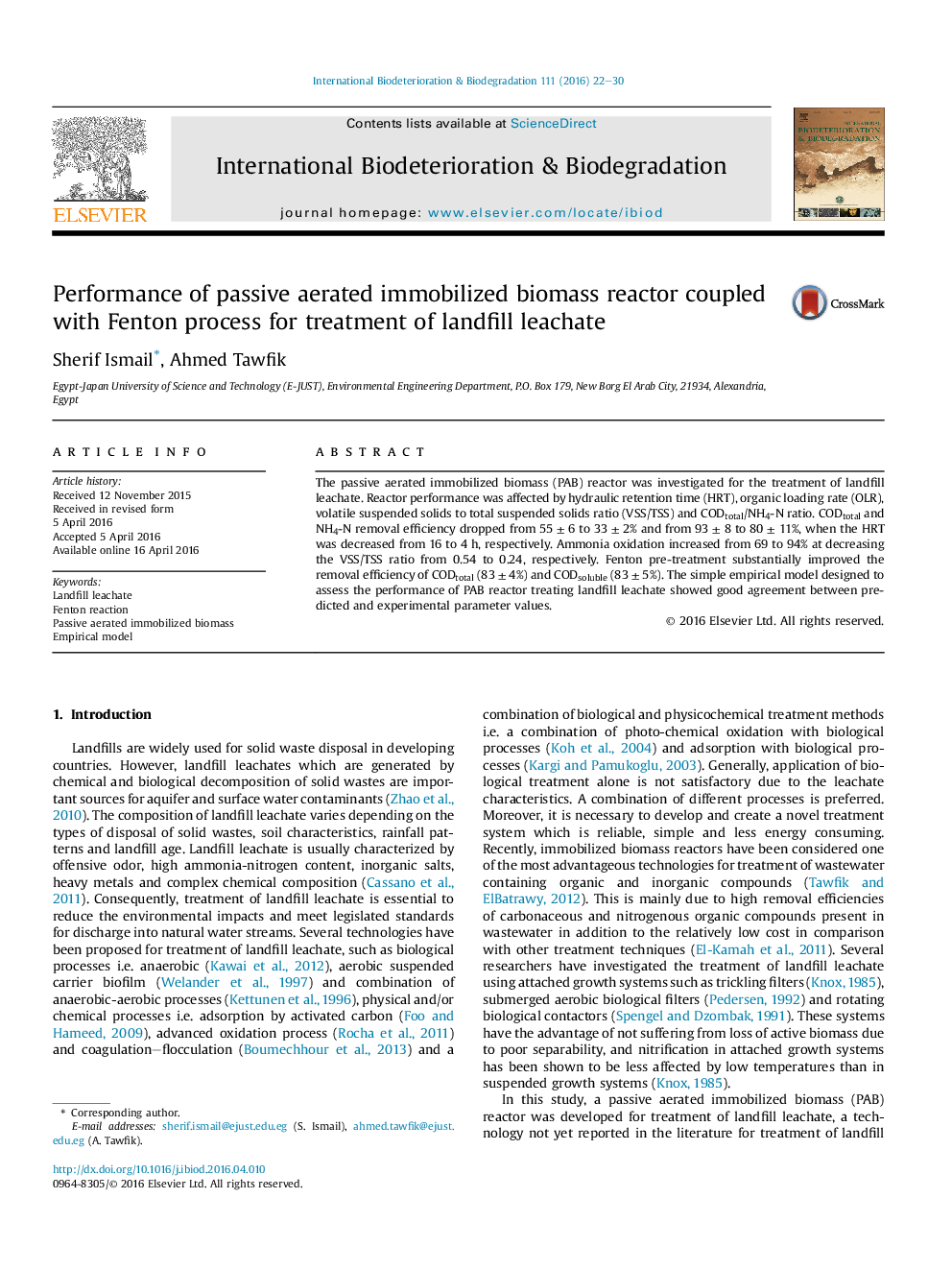| Article ID | Journal | Published Year | Pages | File Type |
|---|---|---|---|---|
| 4364239 | International Biodeterioration & Biodegradation | 2016 | 9 Pages |
•PAB reactor had a potential in treating landfill leachate with stable operation.•The excess sludge represented only 6.5% of the total imposed organic loading rate.•Fenton process improved biodegradability and subsequent PAB reactor performance.•PAB reactor showed high performance to handle the fluctuation in HLRs and OLRs.•Empirical model has been conducted to assess the mechanism removal of pollutants.
The passive aerated immobilized biomass (PAB) reactor was investigated for the treatment of landfill leachate. Reactor performance was affected by hydraulic retention time (HRT), organic loading rate (OLR), volatile suspended solids to total suspended solids ratio (VSS/TSS) and CODtotal/NH4-N ratio. CODtotal and NH4-N removal efficiency dropped from 55 ± 6 to 33 ± 2% and from 93 ± 8 to 80 ± 11%, when the HRT was decreased from 16 to 4 h, respectively. Ammonia oxidation increased from 69 to 94% at decreasing the VSS/TSS ratio from 0.54 to 0.24, respectively. Fenton pre-treatment substantially improved the removal efficiency of CODtotal (83 ± 4%) and CODsoluble (83 ± 5%). The simple empirical model designed to assess the performance of PAB reactor treating landfill leachate showed good agreement between predicted and experimental parameter values.
